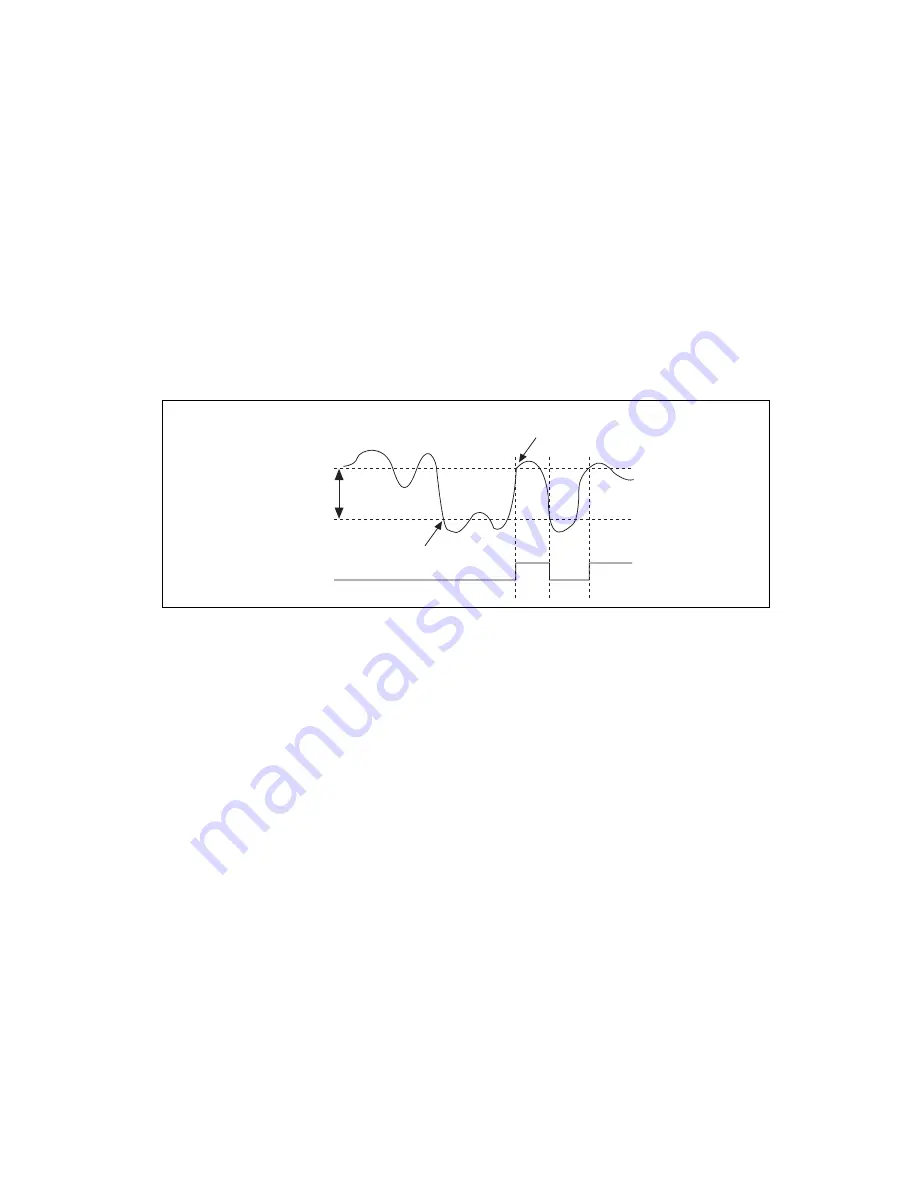
Chapter 11
Triggering
©
National Instruments Corporation
11-5
Analog Edge Trigger with Hysteresis (Rising Slope)
When using hysteresis with a rising slope, you specify a trigger level and
amount of hysteresis. The
high threshold
is the trigger level; the
low
threshold
is the trigger level minus the hysteresis.
For the trigger to assert, the signal must first be below the low threshold,
then go above the high threshold. The trigger stays asserted until the signal
returns below the low threshold. The output of the trigger detection
circuitry is the internal Analog Comparison Event signal, as shown in
Figure 11-5.
Figure 11-5.
Analog Edge Triggering with Hysteresis Rising Slope Example
Analog Edge Trigger with Hysteresis (Falling Slope)
When using hysteresis with a falling slope, you specify a trigger level and
amount of hysteresis. The low threshold is the trigger level; the high
threshold is the trigger level plus the hysteresis.
For the trigger to assert, the signal must first be above the high threshold,
then go below the low threshold. The trigger stays asserted until the signal
returns above the high threshold. The output of the trigger detection
circuitry is the internal Analog Comparison Event signal, as shown in
Figure 11-6.
Analog Comparison Event
Hysteresis
High threshold
(Level)
Low threshold
(Level – Hysteresis)
First signal must go
below low threshold
Then signal must
go above high threshold before
Analog Comparison Event asserts














































